2015 Ford Edge Ecoboost Review With Video

The large two-row crossover is a rare breed. With compact crossovers getting less compact and folks defecting to supersized three rows, Toyota and Honda chose to kill the Venza and Accord Crosstour while Ford pressed on with a redesign of the Edge. You can think of the Edge as a “tweener” crossover slotting between the Escape and the Explorer while at the same time being the spiritual successor (in modern form) to the Bronco and two-row Explorers of yesteryear. Although Ford says the Edge is a complete redesign, you could be forgiven for thinking this is more of a refresh, and that’s not a bad thing since the Edge was already one the most appealing options in this phone-booth-sized segment.
Exterior
This change under the sheetmetal explains the Edge’s growth which is up four inches overall with a one-inch wheelbase stretch. The increase gives the Edge a sleeker and less boxy profile than before while offering more interior room. Meanwhile, Ford tacked on a new grille that strikes me as the merger of Hyundai and Ford’s styling cues. Since the Venza and Crosstour are leaving us this year (production has supposedly already stopped) this means the Edge’s direct competition comes in the form of the Hyundai Santa Fe Sport, Nissan Murano and certain versions of the Kia Sorento which comes as either a two- or three-row crossover for 2016. If you want to expand the pool, the Grand Cherokee and Lexus RX are also plausible cross-shops, although the Jeep is far more off-road focused and the RX truly competes with the Edge’s ritzy brother: the Lincoln MKX.
Interior
Front-seat comfort is excellent, although you’ll find that the new Murano’s seats are a hair softer and the 2016 Sorento (in top end trims) offers a wider range of seat adjustments. Rear-seat comfort is excellent and I found the rear cabin more comfortable than the competition, especially the Jeep which has strangely stiff seat cushions. Seat comfort is, in general, a reason to upgrade from a compact crossover to this midsized category. Much of the increased comfort comes from increased legroom and headroom. For 2015, the Edge gains three inches of combined room vs the outgoing model. The way legroom is measured seems to be a matter of constant debate, highlighted by the similar legroom numbers you get in the Honda CR-V. However, in the real world, the Edge not only feels larger, but it’s larger in practical terms as well. In the Edge I was able to properly install a rear-facing child seat behind a 6’2″ passenger, something I could not do in the CR-V. In the way-back you’ll find 25 to 40 percent more cargo room than most compact crossovers, but less than the average 3-row crossover with the 3rd row folded.
Infotainment
MyFord Touch is one of the most maligned infotainment systems on the market, but it is also one of the most fully featured. Even in 2015 there are still mainline brands that don’t offer voice command of your USB-connected music library. At this point Ford has addressed most of the major issues that plagues the MFT system launch, except for the speed. Interacting with the touchscreen requires patience as screen changes are considerably slower than the Kia, Chrysler, GM and Toyota alternatives.
Integrated telematics systems that email you vehicle health reports, allow you to call a concierge, request emergency assistance and know when your airbags have gone off are seeing a renaissance. This generation of Ford’s infotainment system includes SYNC Services which offers OnStar-like telematics without the integrated modem. On the downside, if you’ve forgotten your phone and you get in an accident, the car can’t dial for help.
Drivetrain
Making the Edge Sport sportier than before is another new engine: the 2.7-liter twin-turbo V6 from Ford’s F-150. Inserted sideways under the Edge’s hood, the turbo-six loses a little power but still trumps the outgoing 3.7-liter V6 by 10 ponies and 70 lb-ft (315 hp 350 lb-ft). More impressively, that torque comes to a boil 1,250 RPM sooner. In perhaps the most interesting twist, the Edge Sport doesn’t come with AWD standard. That’s right, all 350 lb-ft of twist are routed to the front wheels only by default. Torque steer? You betcha.
Curb weight ranges from 3,912 pounds in the FWD 2.0-liter Ecoboost base model to a maximum of 4,236 pounds in the FWD Sport model. If you want AWD, it adds around 165 pounds, bringing the AWD Sport to a fairly hefty 4,400 pounds when fully equipped. Despite the weight, the Edge handles surprisingly well. You can thank a few things for that: the wide 64.8 inch track, standard 245-width rubber and a suspension design that’s related to Ford’s global portfolio including the current European Mondeo. Somewhat surprisingly, jumping from the base SE to the Titanium or Sport trims doesn’t buy you wider rubber but the aspect ratio falls from 245/60R18s in the SE to 245/55R19s in the Titanium and 245/50R20s in the Sport. While the aspect ratio and spring rates obviously play a role in lateral grip, the SE and Sport are closer together than you think. (As a late 2015 option Ford will offer an optional 265/40R21 wheel and tire package with summer rubber which we were not able to test.)
The hefty curb weight, moderately soft springs and 55-series tires combine to give the Edge a compliant highway ride that wafted over potholed and rough pavement without batting an eye. While not as soft as the new Murano, the Edge has a more pleasing balance because the Nissan often feels too soft on your favorite winding mountain road. Hyundai’s Santa Fe Sport actually deserves its name because it feels the most nimble and athletic in the corners. The Hyundai weighs around 500 pounds less which certainly doesn’t hurt, but the suspension is also tuned on the firmer side of this segment. On the other side is the Grand Cherokee which, thanks to its off-road mission, weighs more, is higher off the ground and feels more ponderous. Meanwhile the Sorento straddles the middle of the segment thanks to a light curb weight and moderately firm springs. Steering feel is numb but accurate and I had no problems understanding what the front wheels were up to.
Priced between $28,100 for a FWD SE model and $48,100 for the AWD Sport trim, the Edge starts more expensive and scales higher than the Korean options. However, shoppers need to look beyond the low starting price with the Kia and Hyundai because base Santa Fe and Sorento models come with a naturally aspirated 2.4-liter four-cylinder engine that is considerably less powerful than the Edge’s base engine and the Koreans have fewer features standard as well. Equip the Hyundai and Kia with a 2.0-liter turbo engine so they compare more directly with the Edge and they ring in at $31,250 and $31,100 respectively, giving Ford the upper hand in MSRP. The value pricing continues against Nissan and Jeep with the Edge undercutting the Murano by around $1,000 across the line and the Jeep by $1,500-2,000 depending on the options.
Nissan’s Murano wins the award for being the best highway cruiser in the bunch. The Jeep is the off-road alternative and the Edge is the value leader. The Kia, however, is my top choice. The Sorento has a fresher look, it’s slightly bigger with a nicer interior and a 0-60 time that’s a bit faster as well. The Sorento handles surprisingly well in its latest generation and top-end trims are better equipped than the Edge. While the Sorento EX is more expensive than a base Edge, you do get more feature content in the Kia and by the time you compare top-end trims the Sorento is less expensive. The only trouble with the Sorento is that Kia attempts to compete with the Edge, Escape and Explorer with one vehicle. Get the base Sorento and it’s Escape priced with 2 rows and a weak 2.4-liter engine. The 2.0-liter turbo Sorento is a 2-row luxury-leaning crossover with optional Nappa leather and HID headlamps. Check the box for the V6 and you get a small third row for your mother-in-law as a smaller alternative to the Explorer. This means that V6 Edge competition gets whittled down to just the Nissan and the Jeep.
After a week with the 2.0-liter Ecoboost Edge I have come to a few conclusions. First up, skip the V6 as it really makes no sense. The fuel economy in the 2.0-liter turbo is better and the performance is nearly identical. Second, get AWD even if you live below the snow belt, unless you really love torque steer. Third, the front-wheel peel in a FWD 2.7-liter twin-turbo Edge Sport made me giggle. If you’re shopping for the best 2.0-liter turbo crossover in this segment, stop by your Kia dealer. However, if you want something this size that will put a smile on your face without braking the bank, the Edge Sport is the CUV you’re looking for. The Edge Sport AWD bridges the gap between the fire-breathing Grand Cherokee SRT and a mainstream crossover like the Sorento and Santa Fe Sport. Think of the Edge Sport as the gravel-road version of the Taurus SHO. I’ll take a red one.
Ford provided the vehicle, insurance and one tank of gas for this review
Specifications as tested
0-30: 2.65
0-60: 7.5
1/4 Mile: 15.80 Seconds @ 86 MPH
Average Economy: 24.6 MPG

More by Alex L. Dykes
Latest Car Reviews
Read moreLatest Product Reviews
Read moreRecent Comments
- FreedMike Miami is a trip - it's probably the closest thing we have to Dubai in this country. If you are into Lambos and the like, definitely go - you'll see a show every night. These condos fit right in with the luxury-brand culture - I'm surprised there isn't a Louis Vuitton or Gucci building. I was in Miami Beach in January with my fiancee, and we shared a lovely lunch that consisted of three street tacos each, chips and salsa, and two sodas. Tab: $70.00, with tip. Great town, assuming you can afford to live there.
- Kjhkjlhkjhkljh kljhjkhjklhkjh Pay money to be inundated in Adverts for a car that breaks when you sneeze? no
- Laflamcs My wife got a new 500 Turbo in 2015. Black exterior with an incredible red leather interior and a stick! The glass sunroof was epic and it was just about the whole roof that seemed to roll back. Anyway, that little bugger was an absolute blast to drive. Loved being run hard and shifted fast. Despite its small exterior dimensions, one could pile a lot into it. She remember stocking up at COSTCO one time when a passerby in the parking lot looked at her full cart and asked "Will it all fit?" It did. We had wonderful times with that car and many travels. It was reliable in the years we owned it and had TONS of character lacking in most "sporty" car. Loved the Italian handling, steering, and shift action. We had to trade it in after our daughter came along in 2018 (too small for 3 vacationers). She traded it in for a Jeep Renegade Latitude 6 speed, in which we can still feel a bit of that Italian heritage in the aforementioned driving qualities. IIRC, the engine in this Abarth is the same as in our Renegade. We still talk about that little 500..........
- Rochester If I could actually afford an Aston Martin, I would absolutely consider living in an Aston themed condo.
- Redapple2 I ve slept on it. I would take one on a 3 yr lease for $199/mo- ($1000 down total). Evil gm Vampire gave me this deal in 2012.



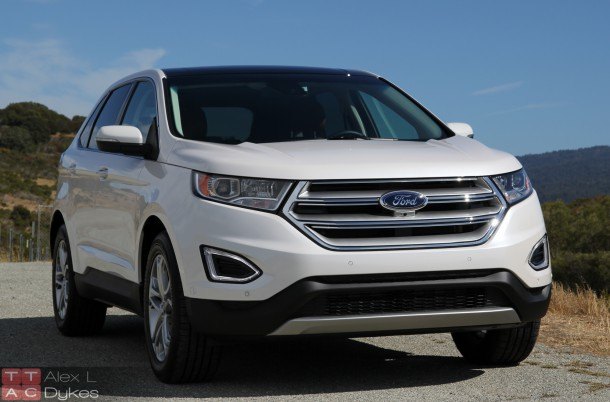



















































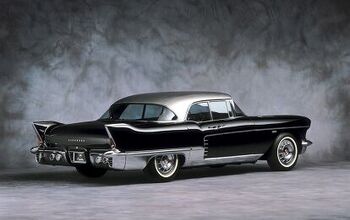
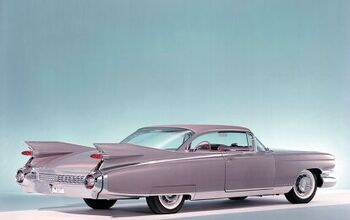
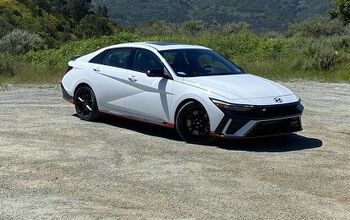
![2015 Ford F-150 Platinum 4×4 3.5L Ecoboost Review [With Video]](https://cdn-fastly.thetruthaboutcars.com/media/2022/07/17/9043901/2015-ford-f-150-platinum-44-3-5l-ecoboost-review-with-video.jpg?size=350x220)
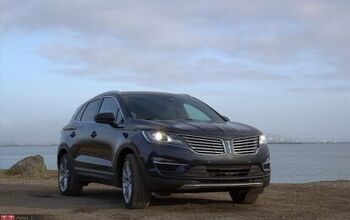
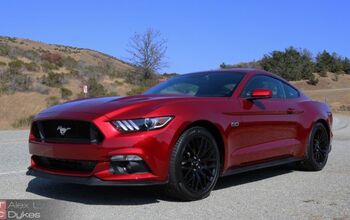
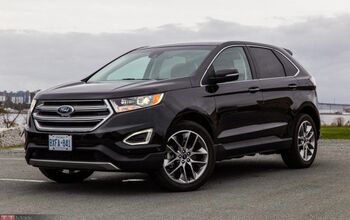
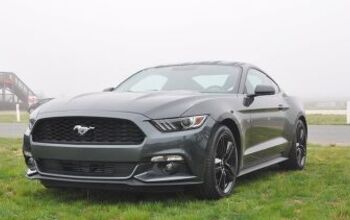
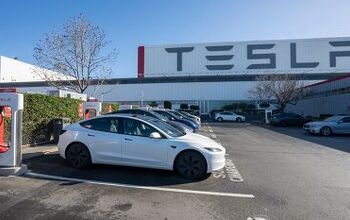
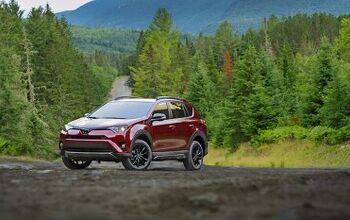

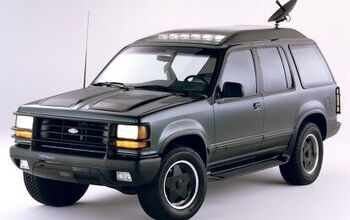


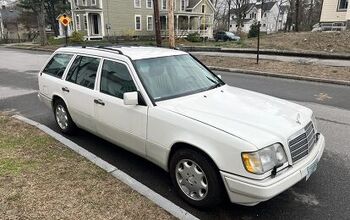
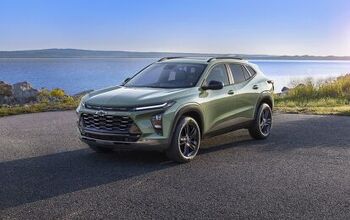


Comments
Join the conversation
What is up with Ford and all the Hankook tires on new vehicles? I seem to recall that Henry Ford II was opposed to using Michelins on new cars because they were French, he'd surely turn over in his grave if he saw Korean tires on Fords. I'm not saying I need Michelin,I doubt they are functionally better than other high quality tires, but I surely would expect to see what I consider a first-tier brand...Goodyear, Continental, Firestone, etc. When I buy a Korean car, I expect Korean branded tires...
New Flex? Any more info? I distinctly recall hearing Flex was not getting invited back for another season.